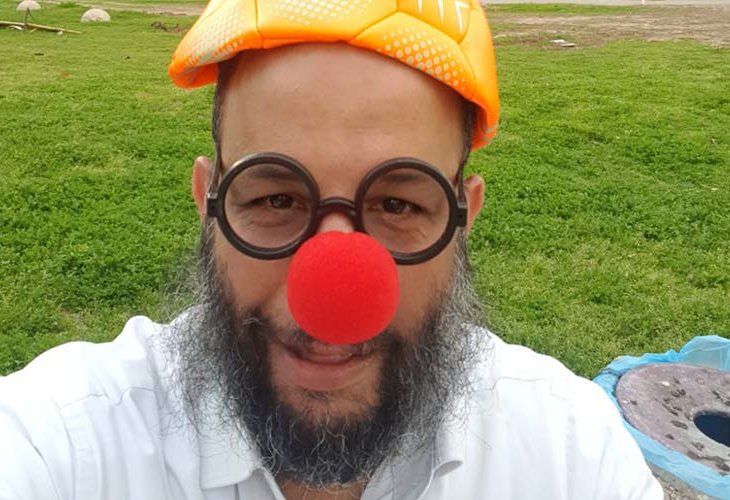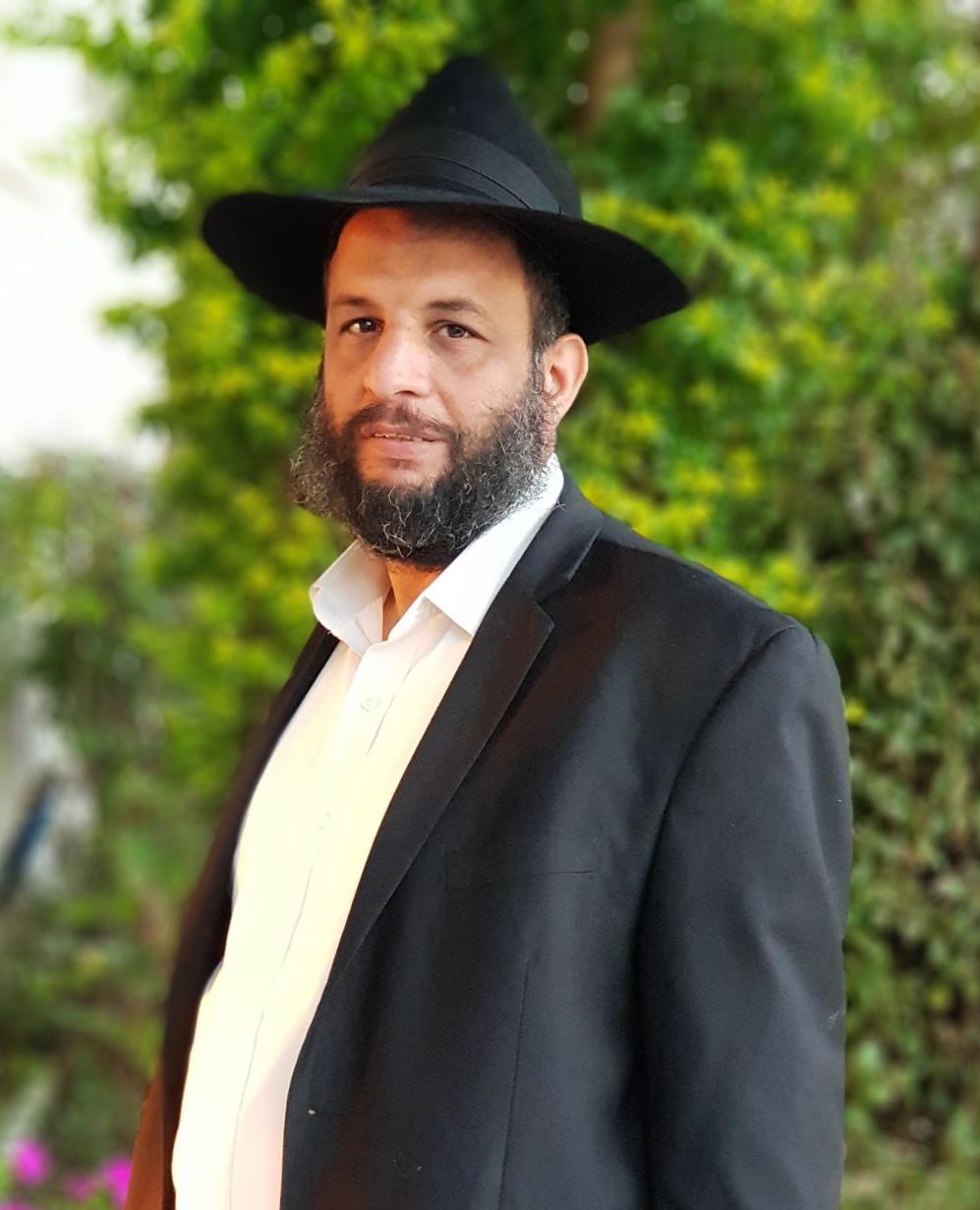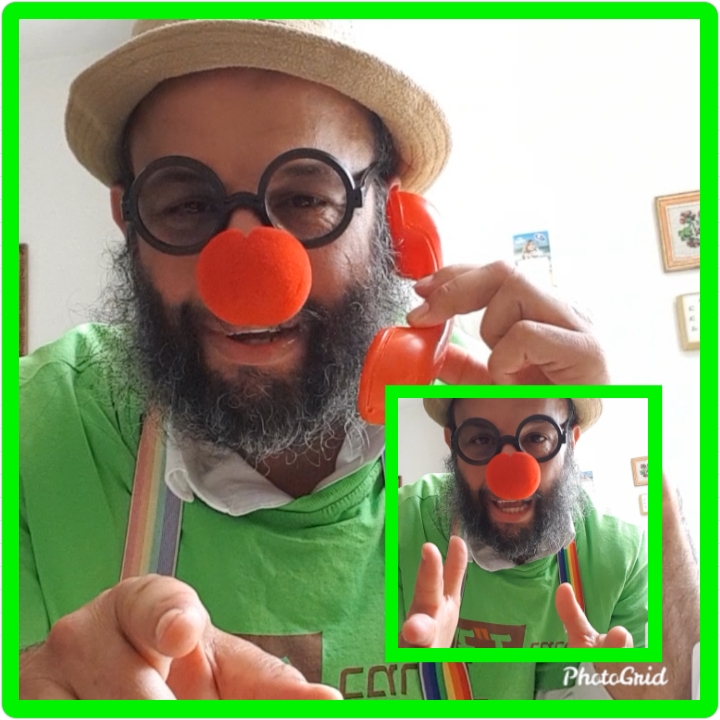The Inspector Who Became a Clown: "I Felt It Wasn't Right for Someone Like Me to Start Fooling Around"
After decades in education and inspecting various educational institutions, Rabbi Shachar Sha'ar decided to study medical clowning and even integrate the clowning approach into the curriculum. "It's important for teachers to know how to make children laugh," he believes. "It won't harm discipline but quite the opposite." How does he implement it in practice?
 Rabbi Shachar Sha'ar (Photos: Shlomi Sha'ar)
Rabbi Shachar Sha'ar (Photos: Shlomi Sha'ar)When educational inspector Rabbi Shachar Sha'ar attends important meetings at the Ministry of Education or visits schools to closely follow educational processes, no one can believe that there are hours when this serious man serves as a clown and entertainer.
"When people ask me who I am, I always answer that I'm an educator, because for me that's what defines me most," he says. "It's what I've done all my life, and it's my life's purpose. But yes, I'm also definitely a medical clown. I do it at least once a week on a volunteer basis at the hospital in Rehovot, and that's my second 'hat'."
Interestingly, these two 'hats' often merge into one. How does it happen? Stay tuned.

Education Around the Clock
Rabbi Sha'ar grew up in the Kiryat Moshe neighborhood in Rehovot, organizing educational activities for children with his father from a young age. He later worked as a counselor in a residential school, then became a teacher for three-year-olds at a Talmud Torah. From there, he moved on to teaching a third-grade class, advanced to teacher training, and was subsequently asked to manage different educational institutions. Today, he is an inspector for the Ministry of Education responsible for many institutions and educational teams.
As an educator with so many years of experience, do you really think teachers are doing everything they can to help our children?
He sighs. It turns out the issue is complex. "In recent years, there has been a major change—both positive and negative. Many teachers realize they are less suited for the profession and consequently drop out. This has created a severe shortage of teachers, which is not a simple challenge. On the other hand, those who remain are people who are truly dedicated to children's education and genuinely committed to them. Nowadays, the system is much more adapted to children than it was a decade ago because those involved in education see the importance and mission of their roles. I hope more staff joins because there is a great need and demand."

What, in your opinion, can turn a teacher into a good teacher?
"About seven years ago, I published a book on education called 'To Educate and Succeed'. The book essentially suggests that there are three key elements important for an educator, encapsulated in the acronym 'EMT'—the first is 'Love for the Child'. If you don't love the child, you have no right to educate them; the second is 'Professionalism'—work professionally with the child, and if they need emotional or other professional help, take them for appropriate consultation. The third important element is interpersonal communication—there must be good interpersonal communication between the child and the educator guiding them. You should never mock or belittle the child but listen to them all the time. That's how you create correct communication. These three things—'EMT'—are the main tools for success in education."

Rabbi Sha'ar notes that he himself has undergone a process over the years. "When I was first talked to about love for a child, I couldn't connect with it. I thought to myself: 'How will I be able to love the child when I have to discipline them now?' Back then, there was no one to guide me and explain that even setting boundaries can come from true love. This understanding developed over the years and pushed me to publish educational books on these topics."
"I Was Ashamed to Attend the Clowning Course"
For those wondering how an educator who also publishes instructional books becomes a clown, Rabbi Sha'ar explains: "The truth is, as a child, I was a bit mischievous and loved to laugh and make others laugh. The teachers didn't like it, and when I became a teacher, I began to understand why. A joking child often causes disruptions in the lesson and breaks the orderly conduct. They are challenging, and it's not easy to deal with them. However, I also understood that when we want to connect with the child, we must find their strengths and talents. If the child is strong in art, we should engage them in that area, and if in writing, we take them through writing to success experiences. And what if they're a clown? In such cases, we can harness their ability to make others laugh. I truly believe in this.

"During those days, a medical clowning course was opened, held every Friday. I decided to enroll and indeed attended the first session. But then I started to worry that maybe it's not really suitable for me. I looked at the other people in the group and felt they were a bit silly; they seemed strange to me—sorry for the expression—and I told myself that it's not appropriate for me as an inspector with a Master's degree in education to make funny faces and sounds. It simply wasn't dignified.
"In my heart, I decided not to continue attending the course, but the interesting thing happened when I got home and suddenly felt that I had a particularly good day, finding myself smiling at the children all the time without restraint. On Shabbat, I told my family about the course and involved the kids around the table. I noticed that the atmosphere became pleasant and so good. This led me to understand that even though I thought the studies weren't suitable for me, they probably were, so I continued the course for about half a year."

Only after the course ended and Rabbi Sha'ar became a medical clown did he volunteer for the first time in the role at the hospital. "At first, I was a bit embarrassed to go between the patients. Then I felt strange, but each time I arrived to volunteer, my confidence grew, and I was amazed to see how people needed this joy and were waiting for me to come and cheer them up. This is how I began to regularly volunteer every Friday at the hospital, and since then, I've felt my life change."

The Teacher Clown
Did you also bring clowning into schools?
"Yes, it was the next step when I concluded that clowning doesn't have to be only medical but can also be 'educational clowning'. I even created a course for teachers called 'The Teacher—The Classroom Clown', where I teach them to use tools that medical clowns use to create a strong connection with students and educate them with a smile and enjoyment. I was surprised when even rabbis from yeshivas attended the course. They told me they felt obliged to take such a course and understand the smiling approach to studies and education."
But how is it possible for a teacher to laugh with the class one moment and handle discipline problems the next with strictness?
"That is exactly the mistake that teachers sometimes make. They believe that if they want to impose discipline in the class, they must be strict and stern throughout all hours of the day, even without smiling, and that is entirely untrue. Even in the field of medical clowning—the clown does not come and say, 'Let’s skip the medical treatment and just laugh all day.' Instead, alongside the medical treatment that may be painful and unpleasant, he suggests smiling and laughing a little, understanding that this is also part of the healing process.

"The interesting thing is that teachers told me that sometimes after they applied the laughter method in the classroom, they no longer had to deal with discipline problems, as the children initially stretched the boundaries less. There is no limit to the ability of joy to change our lives, and laughter has a very powerful force. It’s not just in the classroom or the hospital but also at home and everywhere. You just have to try it and see wonders."
In conclusion, he also has a tip for parents: "When I finish volunteering at the hospital and have to leave the patients, I always make sure to part with a big smile, so that the good atmosphere accompanies them further and they don't just get 'thrown' back into the bed and forget I visited them. We at home can also sometimes be excellent parents, listening to the child all day, being patient with them, and giving them everything they need, but in the evening, when everyone is tired and wants to end the day, boundaries suddenly stretch, and bedtime becomes tense and unpleasant. It's very important to remember that precisely at such times, we need to make an extra effort to be patient. It's very important for the child to end the day with a smile and hear only kind words before bedtime. If you try this, you'll see that the entire house will become calmer and happier."

